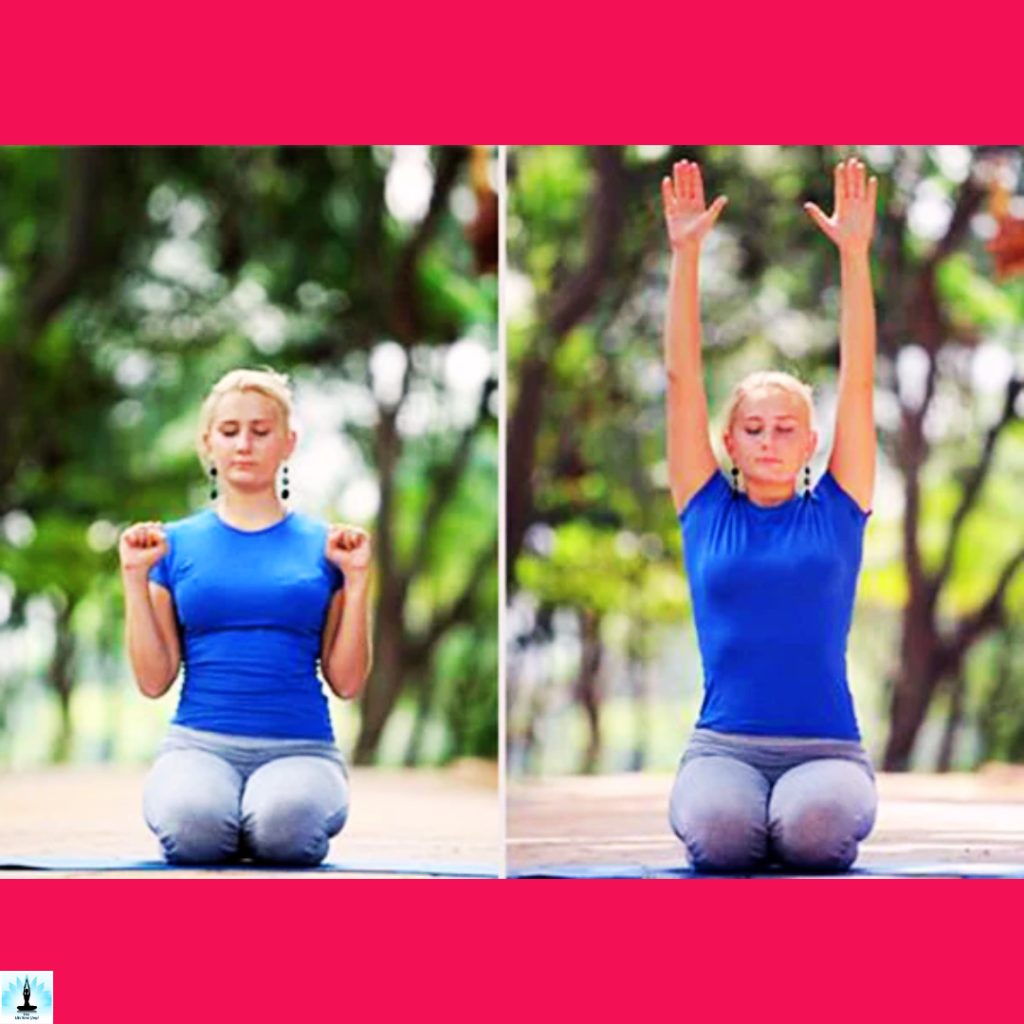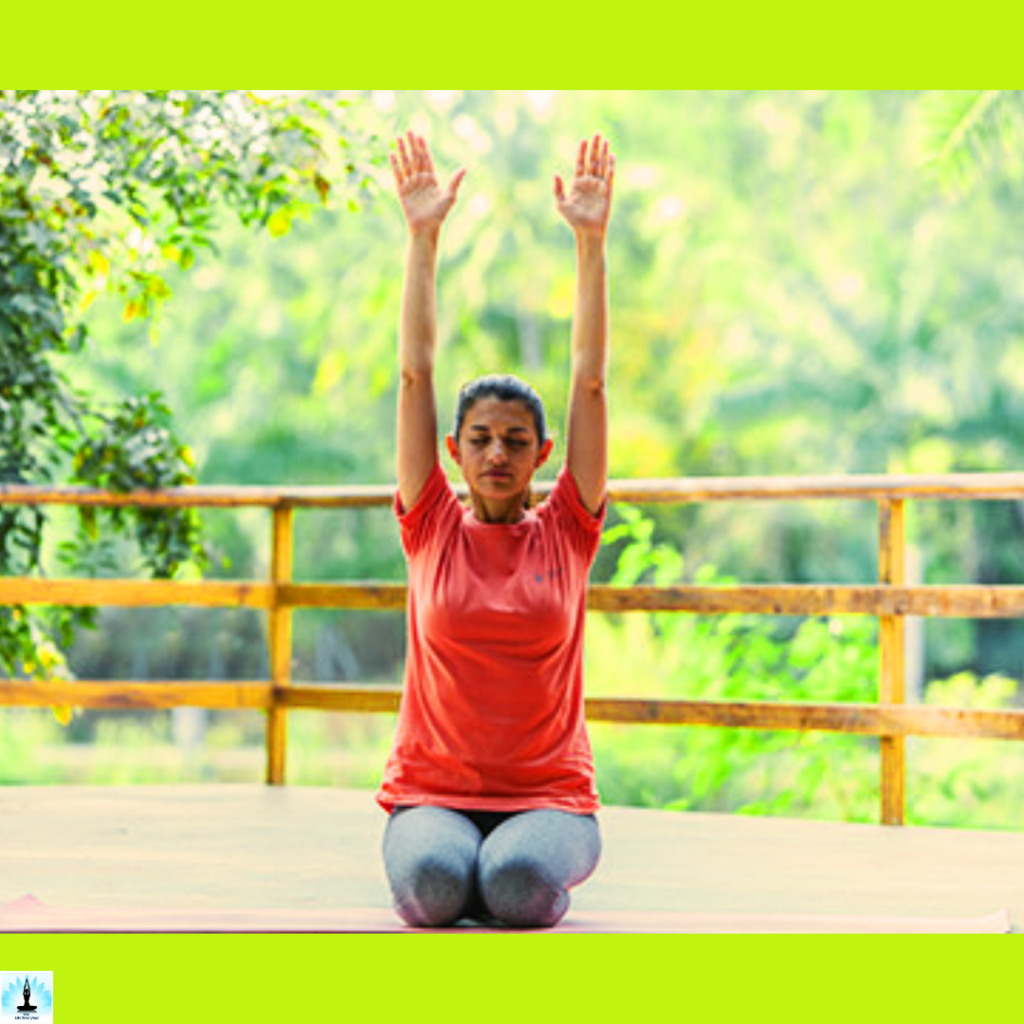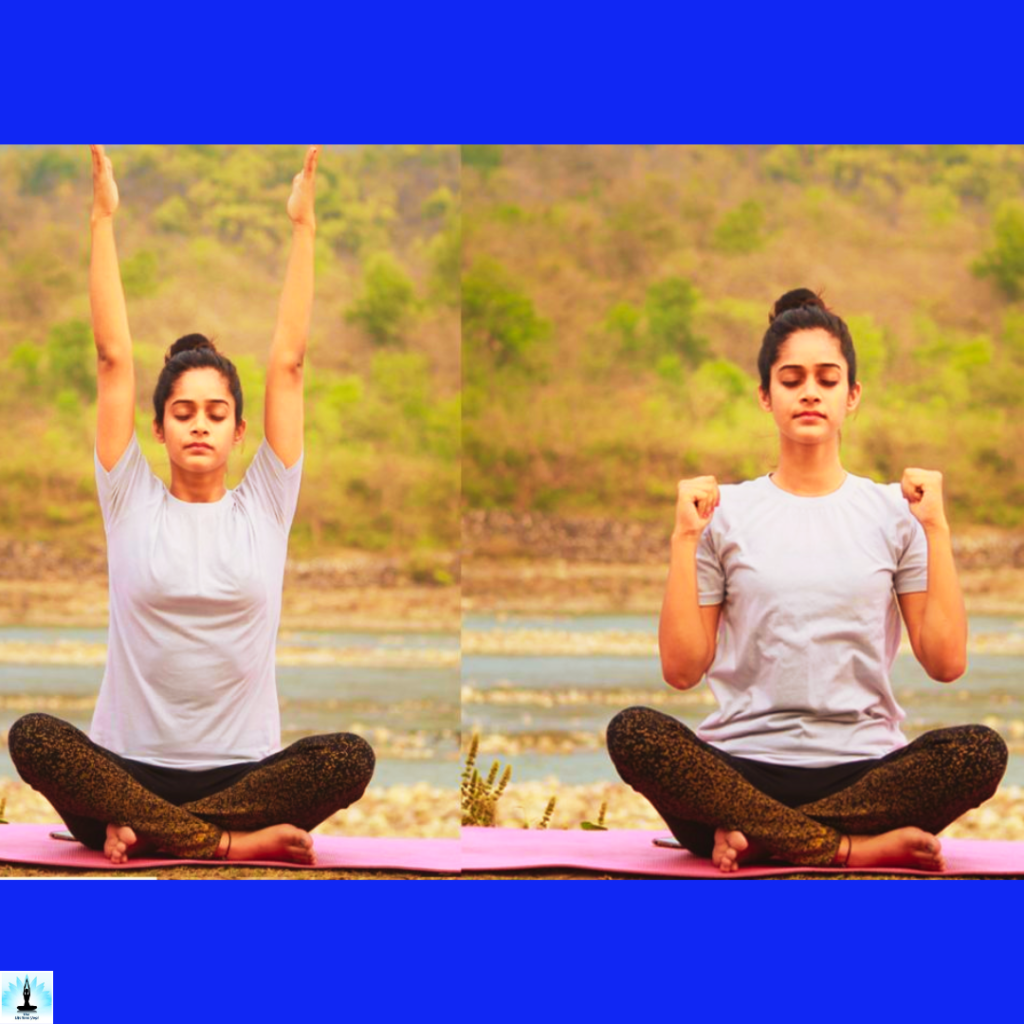Introduction – 11 Top Benefits of Bhastrika Pranayama | Best 12 Step-by-Step Instructions to Perform Bhastrika Pranayama
Bhastrika Pranayama, often referred to as Bellows Breath, is a powerful and invigorating breathing technique originating from the ancient practice of yoga. This pranayama technique involves rhythmic and forceful inhalations and exhalations that resemble the pumping action of a blacksmith’s bellows, hence its name.
In Sanskrit, “Bhastrika” translates to “bellows,” which are devices used to intensify the flow of air into a fire, thus enhancing its intensity. Similarly, Bhastrika Pranayama aims to stoke the inner fire or vital energy (prana) within the body. This practice is not only beneficial for enhancing respiratory capacity but also for energizing the mind and body.
Table of Contents
The Yogic Philosophy of the Bhastrika Pranayama
The yogic philosophy underlying Bhastrika Pranayama encompasses the concept of harnessing and regulating the vital life force known as “prana” through controlled breath. This practice aligns with the fundamental yogic principle that the breath serves as a bridge between the physical body and the mind.

In yogic philosophy, the balanced flow of prana through breathwork is thought to enhance overall well-being, promote a harmonious connection between body and mind, and lead practitioners toward self-awareness and spiritual growth.
Which Chakra is Affected by Practicing Bhastrika Pranayama?
Bhastrika Pranayama primarily affects the Manipura Chakra, also known as the Solar Plexus Chakra. This chakra is located in the area of the abdomen, near the navel. It is associated with personal power, self-confidence, willpower, and transformation.
The forceful and dynamic nature of Bhastrika Pranayama’s breathing technique stimulates the Manipura Chakra, helping to balance and activate it. This can lead to increased energy, improved self-esteem, and a sense of empowerment. As prana flows more freely through the Manipura Chakra, it is believed to contribute to physical vitality as well as mental clarity and determination.
Benefits of Bhastrika Pranayama
The practice of Bhastrika Pranayama offers a wide range of benefits for both the body and the mind:

- Enhanced Respiratory Capacity: Bhastrika Pranayama involves deep and forceful breathing, which helps to expand lung capacity and improve overall respiratory function.
- Increased Vitality: The practice activates the flow of prana (life force energy), revitalizing the body and boosting overall energy levels.
- Improved Circulation: The rhythmic inhalations and exhalations stimulate blood circulation, aiding in the oxygenation of cells and removal of toxins.
- Mental Clarity: Bhastrika Pranayama oxygenates the brain, improving mental focus, clarity, and alertness.
- Detoxification: The increased circulation and deep breathing help the body to expel toxins and waste products more effectively.
- Balanced Nervous System: The practice helps balance the sympathetic and parasympathetic nervous systems, promoting a state of equilibrium.
- Enhanced Digestion: Activation of the Manipura Chakra supports digestive functions and can alleviate digestive issues.
- Boosted Immune System: Improved oxygenation and circulation contribute to a stronger immune response.
- Strengthened Core Muscles: The vigorous breathwork engages core muscles, helping to tone and strengthen the abdominal area.
- Release of Negative Emotions: Bhastrika Pranayama can assist in releasing pent-up emotions and fostering a more positive emotional state.
- Preparation for Meditation: The focused and rhythmic breath of Bhastrika Pranayama can serve as a preparation for deeper meditation.
Step-by-Step Instructions to Perform Bhastrika Pranayama
Find a quiet and well-ventilated space for your practice. Sit in a comfortable meditative posture such as Sukhasana (Easy Pose) or Padmasana (Lotus Pose). Keep your spine erect and shoulders relaxed.

- Relaxation: Close your eyes and take a few deep, calming breaths to relax your body and mind.
- Hand Position: Place your hands on your knees in Gyana Mudra, where you touch the tip of your index finger to the tip of your thumb, forming a circle, while keeping the other three fingers extended.
- Initial Breath: Begin with a normal inhalation and exhalation to establish your breathing rhythm.
- Forceful Inhalations: Inhale deeply and forcefully through both nostrils, expanding your chest and abdomen fully. This should be an active inhalation, not a passive one.
- Forceful Exhalations: Exhale forcefully and completely through both nostrils, using your abdominal muscles to expel the air. The exhalation should be as powerful as the inhalation.
- Rhythmic Breathing: Continue this forceful inhalation and exhalation pattern in a rapid and rhythmic manner. The breath should be audible, resembling the sound of a bellows.
- Chest and Abdominal Movement: Coordinate the movement of your chest and abdomen with each breath cycle. Inhale as you expand your chest and abdomen, and exhale as you contract them.
- Energetic Focus: As you practice, visualize the flow of energy (prana) entering your body with each inhalation, and imagine releasing any tension or negativity with each exhalation.
- Duration: Start with a manageable number of rounds, such as 20 to 30 rounds. Over time, you can gradually increase the count as you become more comfortable with the practice.
- Awareness: Throughout the practice, maintain your focus on the breath and the sensation of energy flow. Stay present in the moment.
- Completion: After completing the desired number of rounds, take a few natural breaths to return to your normal breathing pattern. Observe any sensations in your body and mind.
- Relaxation: Gently open your eyes and sit quietly for a moment, allowing the effects of the practice to settle in.
Advance Variations of Bhastrika Pranayama
Kumbhaka (Breath Retention)
After completing a few rounds of Bhastrika Pranayama, you can incorporate breath retention. Inhale deeply, perform Bhastrika for a round, then exhale completely and hold the breath (antara kumbhaka). When you feel the urge to inhale, release the breath and continue the Bhastrika cycle. This variation enhances lung capacity and trains breath control.
Bandhas Integration
Incorporate the yogic locks or bandhas to intensify the effects. After a forceful exhalation, engage the Jalandhara Bandha (Chin Lock) by gently pressing your chin to your chest while holding the breath. Release the bandha before inhaling. Similarly, you can add Mula Bandha (Root Lock) and Uddiyana Bandha (Abdominal Lock) to further channel and direct the prana.
Increasing Speed:
Gradually increase the speed of your inhalations and exhalations while maintaining the forceful and rhythmic pattern. Be cautious not to strain, and ensure that your breath remains controlled and steady.
Advanced Duration:
Gradually increase the number of rounds and the duration of each round. However, always prioritize quality over quantity. It’s better to perform fewer rounds with precision and mindfulness than to rush through a large number of rounds.
Therapeutic Applications of Bhastrika Pranayama
There exist various therapeutic applications of Bhastrika Pranayama.
Respiratory Health:
Bhastrika Pranayama is effective for individuals with respiratory conditions such as asthma, bronchitis, and allergies. The forceful inhalations and exhalations help to clear the airways, improve lung capacity, and enhance overall respiratory function.
Stress and Anxiety Reduction:
The rhythmic and vigorous nature of Bhastrika Pranayama activates the parasympathetic nervous system, promoting relaxation and reducing stress and anxiety levels.
Depression and Mood Disorders:
The increased oxygenation and blood circulation resulting from Bhastrika can have mood-enhancing effects, making it potentially beneficial for individuals dealing with depression or mood disorders.
Improving Self-Confidence:
Bhastrika’s impact on the Manipura Chakra can foster self-esteem, empowerment, and a sense of personal strength.
Detoxification:
The rapid and forceful breaths of Bhastrika help expel toxins from the body through enhanced circulation and increased lymphatic flow.
Chronic Fatigue Syndrome:
The practice’s energizing effects can provide relief for individuals suffering from chronic fatigue syndrome by revitalizing the body’s energy reserves.
Pranayamas Related to Bhastrika Pranayama
Preparatory Pranayamas
Kapalabhati Pranayama:
This is also known as Skull-Shining Breath, Kapalabhati involves rapid and forceful exhalations through the nose, followed by passive inhalations. It detoxifies the body, clears the mind, and invigorates the respiratory system. While Bhastrika emphasizes both forceful inhalations and exhalations, Kapalabhati focuses primarily on forceful exhalations.
Follow-up Pranayamas
Ujjayi Pranayama
Often called the Ocean Breath, Ujjayi involves slightly constricting the throat while breathing, creating a soft, audible sound resembling ocean waves. It calms the mind, improves concentration, and aids in regulating the breath. Ujjayi’s focus is on creating a sound during both inhalation and exhalation, which distinguishes it from Bhastrika.
Bhramari Pranayama:
Known as Humming Bee Breath, Bhramari involves inhaling deeply and exhaling while producing a humming sound similar to that of a bee. It promotes relaxation, relieves stress, and quiets the mind. Bhramari emphasizes controlled exhalations with sound, whereas Bhastrika is characterized by rapid and forceful breathing.
Beginner’s Tip of Bhastrika Pranayama
Beginner’s Tip for Bhastrika Pranayama: As a beginner, start practicing Bhastrika Pranayama with a focus on comfort and awareness.
Sit in a relaxed posture, keeping your back straight and shoulders at ease. Begin with a few gentle rounds to acquaint yourself with the rhythm and force of the breath.
Pay close attention to your body’s response and avoid straining. If you feel dizzy or overwhelmed, take a break and return to normal breathing.
Gradually increase the intensity and duration as your body adapts. Prioritize steady and controlled breaths over speed.
Contraindications and Cautions of Bhastrika Pranayama
While Bhastrika Pranayama offers numerous benefits, there are certain situations in which caution should be exercised or the practice avoided altogether. Here are some important considerations:
- High Blood Pressure: Individuals with high blood pressure should approach Bhastrika Pranayama cautiously, as forceful breaths can potentially elevate blood pressure further. A modified or gentler version of the practice may be more suitable.
- Heart Conditions: People with heart conditions, such as heart disease or recent heart surgery, should avoid Bhastrika Pranayama, as vigorous breaths can strain the cardiovascular system.
- Respiratory Issues: If you have respiratory disorders like chronic obstructive pulmonary disease (COPD) or severe asthma, Bhastrika’s forceful breaths may exacerbate your condition. Consult a healthcare professional before attempting this practice.
- Pregnancy: Pregnant individuals should avoid Bhastrika Pranayama due to its intense nature and potential impact on blood pressure. Gentle and restorative pranayama practices may be more appropriate during pregnancy.
- Vertigo or Dizziness: If you experience frequent dizziness or vertigo, Bhastrika’s rapid and forceful breathing may worsen these sensations. Opt for milder pranayama techniques.
- Migraines: Bhastrika’s intense breaths could trigger migraines in susceptible individuals. Choose pranayama practices that are gentler on the body.
- Recent Abdominal Surgery: Those who have undergone recent abdominal surgery should avoid Bhastrika, as the abdominal movements might strain the healing tissues.
FAQs on Bhastrika Pranayama
1. What is Bhastrika Pranayama?
Bhastrika Pranayama, also known as Bellows Breath, is a dynamic yogic breathing technique involving forceful and rhythmic inhalations and exhalations. It aims to energize the body, improve respiratory capacity, and promote mental clarity.
2. How is Bhastrika Pranayama performed?
To practice Bhastrika, sit in a comfortable posture, inhale forcefully through both nostrils, expanding the chest and abdomen, then exhale with equal force. Maintain a rhythmic pace and focus on the breath’s energy.
3. What are the benefits of Bhastrika Pranayama?
Bhastrika offers enhanced respiratory capacity, increased vitality, stress reduction, improved circulation, mental clarity, and empowerment. It also supports digestion, immune function, and emotional balance.
4. Can beginners practice Bhastrika Pranayama?
Yes, beginners can practice Bhastrika, but it’s important to start gradually, focus on controlled breaths, and avoid straining. If you’re new to pranayama, consider learning from a qualified instructor.
6. How does Bhastrika relate to other pranayama techniques?
Bhastrika is a forceful pranayama similar to Kapalabhati but involves both inhalations and exhalations. It’s different from practices like Anulom Vilom (alternate nostril breathing) or Ujjayi (ocean breath) that focus on specific breath patterns.
7. Can Bhastrika Pranayama help with stress and anxiety?
Yes, Bhastrika’s rhythmic breath can activate the parasympathetic nervous system, reducing stress and anxiety. However, those with anxiety disorders should practice under guidance, as intense breathing may trigger discomfort.
8. How long should I practice Bhastrika Pranayama?
Beginners can start with 5-10 minutes and gradually increase the duration. Avoid overexertion, and always listen to your body.
9. Can Bhastrika Pranayama be practiced every day?
Yes, regular practice is beneficial, but consistency and moderation are key. If you experience discomfort or strain, take a break and consult an instructor.
10. Can Bhastrika Pranayama be practiced during pregnancy?
It’s generally advised to avoid Bhastrika during pregnancy due to its vigorous nature. Pregnant individuals should opt for gentler pranayama techniques.
11. Can Bhastrika help with respiratory issues?
Bhastrika’s forceful breaths can be beneficial for enhancing lung capacity and respiratory function. However, individuals with severe respiratory conditions should consult a healthcare professional before practicing.
12. Is Bhastrika Pranayama a form of meditation?
While Bhastrika involves focused breathing, it’s not a form of meditation in itself. However, the heightened awareness and energized state it induces can serve as a preparatory practice for meditation.
13. Can children practice Bhastrika Pranayama?
Children can learn pranayama, but Bhastrika’s forceful nature might not be suitable for young children. Gentle and age-appropriate breath awareness exercises are more suitable.
14. Should I perform Bhastrika Pranayama on an empty stomach?
It’s generally recommended to practice pranayama on an empty stomach, preferably in the morning or several hours after meals. This reduces discomfort and enhances the practice’s effectiveness.
15. How can I ensure I’m practicing Bhastrika correctly?
Learning from a qualified yoga instructor is the best way to ensure correct technique and safety. They can provide guidance, modifications, and adjustments based on your individual needs and abilities.
Conclusion
In conclusion, Bhastrika Pranayama stands as a dynamic and powerful breathing technique within the realm of yoga. With its rhythmic and forceful inhalations and exhalations, this practice serves as a gateway to enhancing vital energy, respiratory capacity, and mental clarity. Rooted in ancient yogic wisdom, it is a tool for holistic well-being, Bhastrika Pranayama symbolizes the harmonious interplay between breath, body, and consciousness, inviting practitioners to embark on a journey of self-discovery and transformation.
Further reading
References
- Mind Your Breathing: The Yogi’s Handbook with 37 Pranayama Exercises. Notion Press. 19 August 2019. ISBN 9781684668434.
- Klostermaier, Klaus K. (2006-01-01). Mythologies and Philosophies of Salvation in the Theistic Traditions of India. Wilfrid Laurier Univ. Press. p. 217. ISBN 978-0-88920-743-1.
- Books, Kausiki (2021-10-24). Markandeya Purana Part 2: Devi Mahatmya: English Translation only without Slokas. Kausiki Books. p. 89.
- Makarand Joshi. LAKSMI TANTRA Translation By Sanjukta Gupta Reprint Delhi 2003 LAKSHMI TANTRA.
- The Attanagalū-Vansa, Or the History of the Temple of Attanagalla: Translated … with Notes … by J. D’Alwis. [With the Pali Text Appended.]. Pali and Eng. Colombo. 1866. p. 154.
- Byghan, Yowann (2020-03-11). Sacred and Mythological Animals: A Worldwide Taxonomy. McFarland. p. 303. ISBN 978-1-4766-7950-1.
- Coburn, Thomas B. Encountering the Goddess: A Translation of the Devi-Mahatmya and a Study of Its Interpretation. State University of New York Press. p. 193. ISBN 978-0-7914-9931-3.
- “The Devi Bhagavatam: The Tenth Book: Chapter 13”. sacred-texts.com. Retrieved 2016-03-26.
- www.wisdomlib.org (2013-05-15). “On the account of Bhrāmarī Devī [Chapter 13]”. www.wisdomlib.org. Retrieved 2022-09-23.
